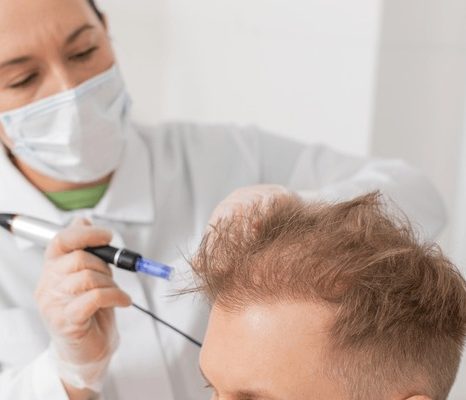
What is scalp microneedling?
Microneedling is a treatment in which micro-openings are created in the skin that trigger a wound healing cascade along with release of various growth factors. Microneedling has been used for many years for skin rejuvenation. It has more recently been studied and showed promise when applied to the scalp for treatment of hair loss. Although further research is ongoing to determine the best regimen and settings when applying this treatment, we think that microneedling works on the scalp by triggering healing and regenerative pathways to stimulate hair follicles, promoting hair growth and thickening of existing hair, and improving delivery of topical medications.
This is a relatively quick in-office procedure that can be easily combined with other treatment options. We do recommend multiple treatments to get best results. Some additional benefits include improvement in scalp and hair health and increased absorption of both topical products and customized products including concentrated growth factors to deeper layers of the scalp. This is usually well tolerated by most patients. It is also a great option for patients who feel that they have not gotten a good response or sufficient improvement from other hair loss treatments.
Potential risks include redness or tenderness or mild bleeding after the procedure. There is a low risk of hair shedding, infection, or scarring.
It is not recommended to microneedle your scalp at home as it is difficult to assure that the area is properly cleaned and that the proper depth is achieved. There is a chance that microneedling too aggressively or too deep could actually damage the hair follicles. There is also a higher chance of infection when you do this at home. It is always best to see an experienced provider when undergoing this treatment.
Microneedling treatments are always best done in a series of treatments although the frequency can vary depending on the patient. It is best to be able to commit to multiple treatments to ensure we can see a clinical response as Dr. Bender figures out the best maintenance regimen for each patient.